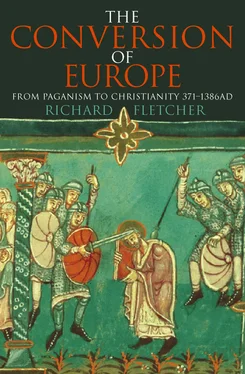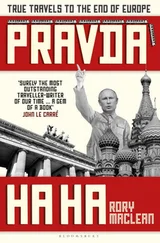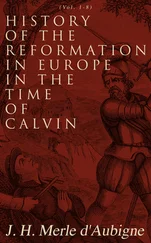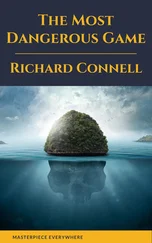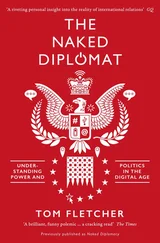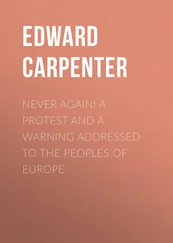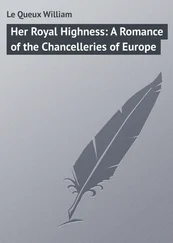THE CONVERSION
OF EUROPE
From Paganism to Christianity
371–1386 AD
RICHARD FLETCHER

DEDICATION DEDICATION EPIGRAPH LIST OF MAPS PREFACE 1 Who is it For? 2 The Challenge of the Countryside 3 Beyond the Imperial Frontiers 4 The New Constantines 5 An Abundance of Distinguished Patrimonies 6 The Chalice and the Horn 7 Campaigning Sceptres: the Frankish Drive to the East 8 Rising by Steps: Christian Consolidation 9 Rival Monotheisms 10 A Certain Greek Named Methodius 11 Scandinavians Abroad and at Home 12 The Eastern Marches from Wenceslas to Nyklot 13 Mission Into Church 14 The Sword Our Pope: the Baltic and Beyond 15 Slouching Towards Bethlehem FURTHER READING PRAISE INDEX NOTES COPYRIGHT ABOUT THE PUBLISHER
To my Father
and
in memory of my Mother
who nurtured my love of History
and by encouraging regular church-going
made me permanently interested
in how those buildings got there and what they were for.
In memory also of
Nico Colchester
my cousin and beloved friend,
a man of rare quality and manifold talents
whose life was tragically cut short
in 1996 at the age of only forty-nine
with whom I often discussed this book
in remote places far from libraries
in Devon and the Cévennes.
EPIGRAPH EPIGRAPH LIST OF MAPS PREFACE 1 Who is it For? 2 The Challenge of the Countryside 3 Beyond the Imperial Frontiers 4 The New Constantines 5 An Abundance of Distinguished Patrimonies 6 The Chalice and the Horn 7 Campaigning Sceptres: the Frankish Drive to the East 8 Rising by Steps: Christian Consolidation 9 Rival Monotheisms 10 A Certain Greek Named Methodius 11 Scandinavians Abroad and at Home 12 The Eastern Marches from Wenceslas to Nyklot 13 Mission Into Church 14 The Sword Our Pope: the Baltic and Beyond 15 Slouching Towards Bethlehem FURTHER READING PRAISE INDEX NOTES COPYRIGHT ABOUT THE PUBLISHER
History, I think, is probably a bit like a pebbly beach, a complicated mass, secretively three-dimensional. It’s very hard to chart what lies up against what, and why, and how deep. What does tend to get charted is what looks manageable, most recognisable (and usually linear) like the wriggly row of flotsam and jetsam, and stubborn tar deposits.
RICHARD WENTWORTH
Enormous simplifications were possibly necessary to carry a deeper truth than lay on the surface of a mass of unsorted detail. That was, after all, what happened when history was written; many, if not most, of the true facts discarded.
ANTHONY POWELL
Seldom, very seldom, does complete truth belong to any human disclosure.
JANE AUSTEN
COVER
TITLE PAGE THE CONVERSION OF EUROPE From Paganism to Christianity 371–1386 AD RICHARD FLETCHER
DEDICATION DEDICATION DEDICATION EPIGRAPH LIST OF MAPS PREFACE 1 Who is it For? 2 The Challenge of the Countryside 3 Beyond the Imperial Frontiers 4 The New Constantines 5 An Abundance of Distinguished Patrimonies 6 The Chalice and the Horn 7 Campaigning Sceptres: the Frankish Drive to the East 8 Rising by Steps: Christian Consolidation 9 Rival Monotheisms 10 A Certain Greek Named Methodius 11 Scandinavians Abroad and at Home 12 The Eastern Marches from Wenceslas to Nyklot 13 Mission Into Church 14 The Sword Our Pope: the Baltic and Beyond 15 Slouching Towards Bethlehem FURTHER READING PRAISE INDEX NOTES COPYRIGHT ABOUT THE PUBLISHER To my Father and in memory of my Mother who nurtured my love of History and by encouraging regular church-going made me permanently interested in how those buildings got there and what they were for. In memory also of Nico Colchester my cousin and beloved friend, a man of rare quality and manifold talents whose life was tragically cut short in 1996 at the age of only forty-nine with whom I often discussed this book in remote places far from libraries in Devon and the Cévennes.
EPIGRAPH EPIGRAPH EPIGRAPH LIST OF MAPS PREFACE 1 Who is it For? 2 The Challenge of the Countryside 3 Beyond the Imperial Frontiers 4 The New Constantines 5 An Abundance of Distinguished Patrimonies 6 The Chalice and the Horn 7 Campaigning Sceptres: the Frankish Drive to the East 8 Rising by Steps: Christian Consolidation 9 Rival Monotheisms 10 A Certain Greek Named Methodius 11 Scandinavians Abroad and at Home 12 The Eastern Marches from Wenceslas to Nyklot 13 Mission Into Church 14 The Sword Our Pope: the Baltic and Beyond 15 Slouching Towards Bethlehem FURTHER READING PRAISE INDEX NOTES COPYRIGHT ABOUT THE PUBLISHER History, I think, is probably a bit like a pebbly beach, a complicated mass, secretively three-dimensional. It’s very hard to chart what lies up against what, and why, and how deep. What does tend to get charted is what looks manageable, most recognisable (and usually linear) like the wriggly row of flotsam and jetsam, and stubborn tar deposits. RICHARD WENTWORTH Enormous simplifications were possibly necessary to carry a deeper truth than lay on the surface of a mass of unsorted detail. That was, after all, what happened when history was written; many, if not most, of the true facts discarded. ANTHONY POWELL Seldom, very seldom, does complete truth belong to any human disclosure. JANE AUSTEN
LIST OF MAPS LIST OF MAPS 1 The Mediterranean world in late antiquity 2 To illustrate the activities of Martin, Emilian and Samson, from the fourth to the sixth centuries 3 To illustrate the activities of Ulfila during the fourth century 4 To illustrate the activities of Ninian and Patrick in the fifth century 5 Gaul and Spain in the age of Amandus and Fructuosus, seventh century 6 The British Isles in the age of Wilfrid and Bede c. 700 7 The Frankish drive to the east in the eighth century 8 The world of Cyril and Methodius in the ninth century 9 Christianity in the Viking world, c. 1000 10 Eastern Europe and the Baltic, twelfth to fourteenth centuries
PREFACE
1 Who is it For?
2 The Challenge of the Countryside
3 Beyond the Imperial Frontiers
4 The New Constantines
5 An Abundance of Distinguished Patrimonies
6 The Chalice and the Horn
7 Campaigning Sceptres: the Frankish Drive to the East
8 Rising by Steps: Christian Consolidation
9 Rival Monotheisms
10 A Certain Greek Named Methodius
11 Scandinavians Abroad and at Home
12 The Eastern Marches from Wenceslas to Nyklot
13 Mission Into Church
14 The Sword Our Pope: the Baltic and Beyond
15 Slouching Towards Bethlehem
FURTHER READING
PRAISE
INDEX
NOTES
COPYRIGHT
ABOUT THE PUBLISHER
1 The Mediterranean world in late antiquity
2 To illustrate the activities of Martin, Emilian and Samson, from the fourth to the sixth centuries
3 To illustrate the activities of Ulfila during the fourth century
4 To illustrate the activities of Ninian and Patrick in the fifth century
5 Gaul and Spain in the age of Amandus and Fructuosus, seventh century
6 The British Isles in the age of Wilfrid and Bede c. 700
7 The Frankish drive to the east in the eighth century
8 The world of Cyril and Methodius in the ninth century
9 Christianity in the Viking world, c. 1000
10 Eastern Europe and the Baltic, twelfth to fourteenth centuries
This book is an investigation of the process by which large parts of Europe accepted the Christian faith between the fourth and the fourteenth centuries and of some of the cultural consequences that flowed therefrom. It is therefore unfashionably ambitious in its scope. Professional historians today are expected to know more and more about less and less, and to communicate their findings to other professional historians in those weird gatherings known as academic conferences. In consequence fewer and fewer people are going to listen to what they have to say. It is a wholly deplorable state of affairs when specialists in any discipline talk only to each other, and accordingly I have sought to write a book which will communicate some of the fruits of research in a manner which will make them accessible to all. Whether or not I have succeeded in this aim will be for others to judge. The last attempt at such a survey by an English author was a work called The Conversion of Europe by the Reverend C. H. Robinson, published in 1917. Much has happened in the discipline of medieval history in the eighty years since Canon Robinson’s book was published. It is timely to essay a new synthesis.
Читать дальше
